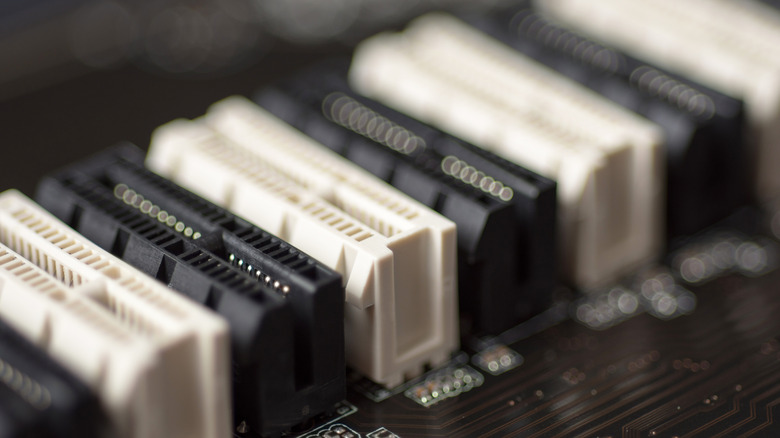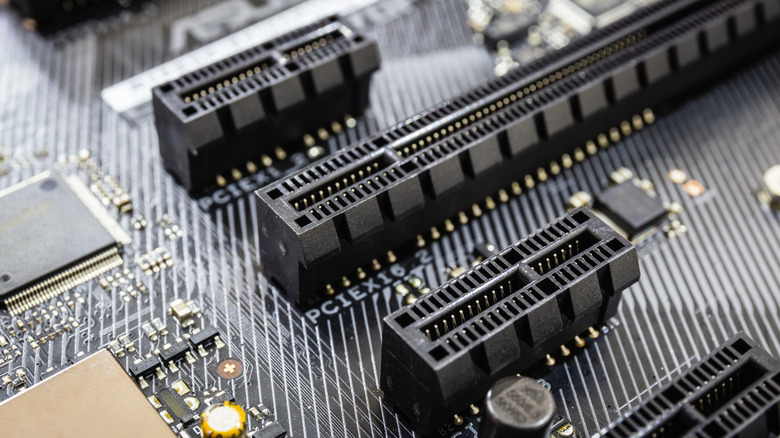PCIe 7.0 Is Coming, And It Might Make Future SSDs Incredibly Fast
The Peripheral Component Interconnect Special Interest Group (PCI-SIG) shared an announcement about the next generation of the PCIe specification — the PCIe 7.0 – confirming that it's going to have remarkably fast transfer speeds. The technical specifications for PCIe 7.0 have been finalized, with key features shared regarding its maximum data rate, encoding speeds, and power efficiency. As PCIes are responsible for sending communications between a computer's motherboard and an assortment of other components, like storage, graphics cards, and networking interfaces, this upgrade could have incredible consequences for the speed of Solid State Drives (SSDs).
PCIe 7.0 is set to offer 128 Gigatransfers per second (GT/s), in both directions, which is a significant improvement over PCIe 6.0, which currently offers up to 64 GT/s as its maximum data rate. To support this increase in transfer speed, the physical signalling rate also needed to be boosted from 16 GHz up to a minimum of 32 GHz. These speeds enable data transfer at unprecedentedly high speeds compared to previous generations.
One of many components that can be connected to a motherboard using PCIe technology is SSDs. SSDs are a type of memory storage with much faster read and write times than traditional hard drives, and can be found in many modern computers. PCIE SSDs offer faster connections than those with the older SATA interface, even at earlier generations. When accounting for PCIe 7.0's fast bandwidth speeds during data transfer, the future of SSDs could be incredibly quick if the technology can be properly integrated and powered.
How will PCIe 7.0 compare to older generations?
The main advantage that comes with each new generation of PCIe (or Peripheral Component Interconnect Express) is that the bandwidth doubles with every generation. Considering that most devices still operate on PCIe 3.0 or 4.0, this means the leap from current, mainstream PCI Express to 7.0 will be significant, offering an 8x increase in the maximum data rate over 4.0. All of that extra bandwidth being available to you on your home computer offers a great deal more power and faster read and write times for compatible SSDs.
The type of connection used will also impact PCIe 7.0 speeds. PCIe connects to your motherboard via slots, which are physical components that offer a specific number of lanes. These connections are known as x1, x4, x8, x16, and x32. The higher the number, the more lanes offered, which in turn means that more bits can travel each cycle. Generally, lower-number connections offer less bandwidth than higher-number connections. PCIe 7.0, like earlier generations, would be able to reach its highest potential using a 16x connection, while an x1 connection would only offer a fraction of the bandwidth.
Using a 16x connection, PCIe 7.0 would be capable of offering up to 512 GB/s, while a x4 connection would offer up to 128 GB/s. Comparably, even at a x16 connection, PCIe 6.0's specifications are limited to a maximum of 256 GB/s, with previous generations falling even lower. PCIe 3.0, for instance, offers a bandwidth of only 32 GB/s with an x16 connection.

